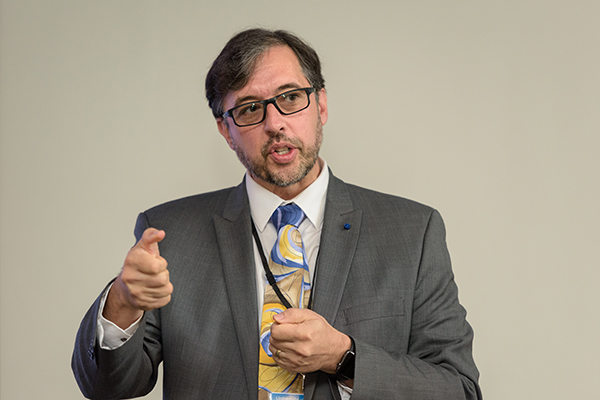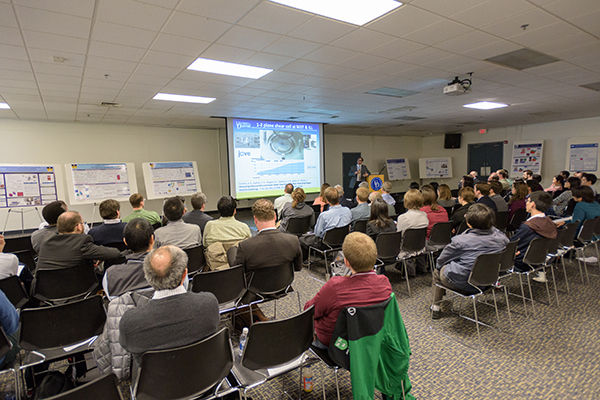Neutron Day
Symposium addresses solution of real-world problems with neutrons
2:36 p.m., Nov. 6, 2015--Neutrons are far too tiny for the human eye to see, but they can help us “see” deep into matter and determine the properties of materials at the subatomic level.
Neutrons can behave like microscopic magnets, diffract like waves, or set particles into motion, revealing properties not available using other probes or imaging techniques.
Research Stories
Chronic wounds
Prof. Heck's legacy
More than 100 scientists and engineers came to the University of Delaware on Wednesday, Nov. 4, to learn about the latest developments in this technology at the fourth annual Neutron Day.
The event, “Solving Real-World Problems with Neutrons,” was held in collaboration with the NIST Center for Neutron Research (NCNR), a national resource for industry, universities, and government agencies.
Directed by Norman J. Wagner, UD’s Center for Neutron Science is a cooperative agreement between the University and the NCNR that supports over 30 faculty, students and scientists between the two institutions in cooperative research, instrumentation development and education.
“Our partnership with UD is extremely important to NIST in broadening our scientific base, improving our instrumentation, and furthering neutron science,” said NCNR director Dan Neumann. “It’s critical that we have a window to the outside in identifying real-world needs and problems.”
The day-long program featured 10 technical talks by presenters from UD, NIST, and industry, as well as some 30 student posters on topics from methane conversion to disease detection.
Students represented not only UD but several other universities as well, including Carnegie Mellon University, Georgetown University, the University of Maryland, and Indiana University.
“We are very fortunate to have such close ties with NCNR, which provides world-class capabilities in terms of both staff and physical infrastructure,” said Wagner, who is the Unidel Robert L. Pigford Chaired Professor of Chemical and Biomolecular Engineering at UD. “This technology is helping to unlock the secrets of materials at the atomic level and providing the foundation to tailor them for a broad range of medical, energy, environmental, and manufacturing applications.”
Neutron Day was sponsored by UD’s College of Engineering, Center for Neutron Science, Department of Chemical and Biomolecular Engineering and Department of Materials Science and Engineering.
Article by Diane Kukich












